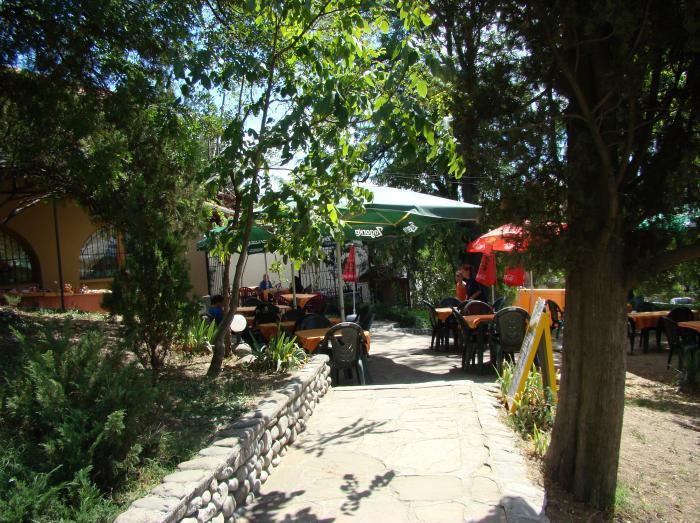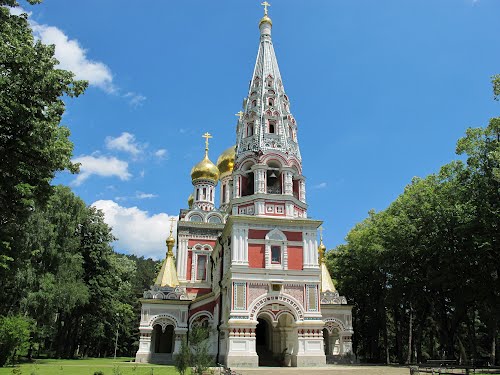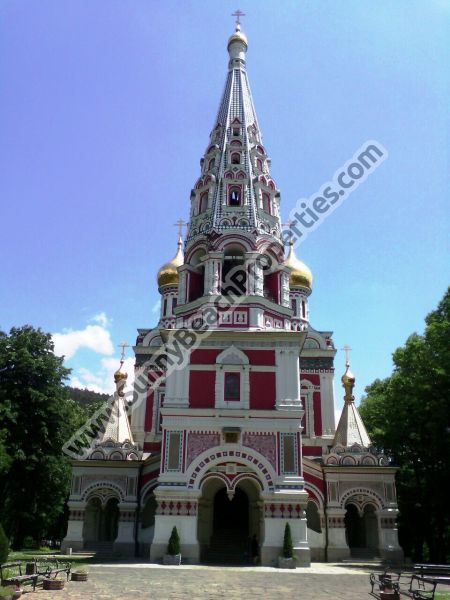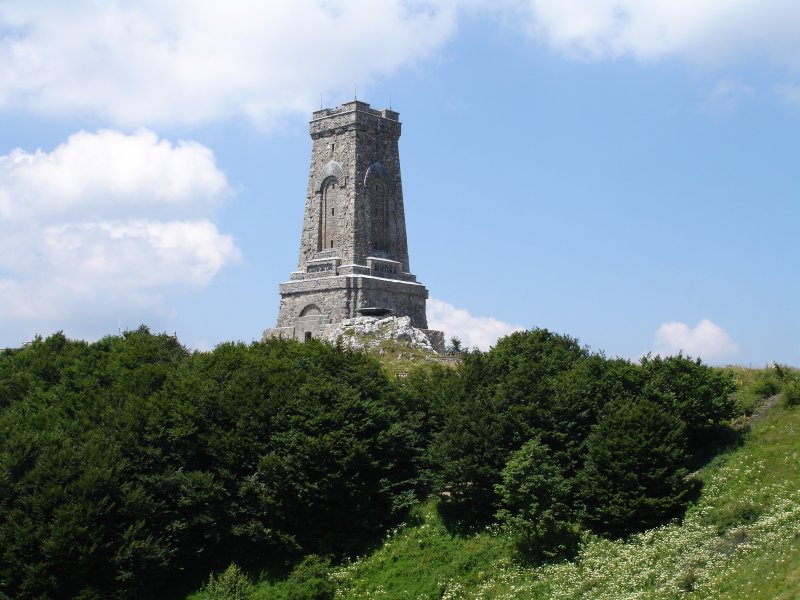Sunny Beach, Nesebar, Ravda, St. Vlas, Elenite, Pomorie ...
Excursions in Bulgaria: Sunny beach - Kazanlak - Roses Festival /05.06-07.06/ - Shipka. Excursion to the Valley of the Roses and Shipka Memorial Monument. One day Tour.
The Festival of Roses usually starts on May 15, but we have chosen for you the most attractive three days of the closing of the festival, during which you can enjoy the traditional Bulgarian folklore, which is highly valued around the world, as well as of traditional procession of the Participants in the festival and the Queen of Roses, but especially to watch the beautiful ritual of picking roses and even take part in it, and of course the sightseeings in the city.
Picking roses ritual usually starts on 20th of May and ends on 07th June, so if you can not attend just the closure of the festival, we have organized for you another excursion Kazanlak - Skobelevo village which you can book at any time.
- Kazanlak - the Valley of Roses - Rose Festival
- Kazanlak area - the Valley of Roses - ritual of roses harvest from 20th of May till 07th of June only!
.jpg)
The rose harvest starts about 5 am and continues until about 10am, so get ready for an early departure as the road to Kazanlak is about 2.5-3 hours. You will watch young girls dressed in traditional Bulgarian costumes to perform the ritual of picking roses, if you wish, you can joun them and pick roses too. Then you can visit the Thracian tomb, which is located in the park area named Tyulbeto.
- Kazanlak - Thracian Tomb

Thracian Tomb of Kazanlak is a round brick tomb, which is located in Kazanlak and is part of a large necropolis, located near the ancient Thracian capital of the kingdom Odrysian - Seuthopolis, in a region where more than a thousand tombs of kings and members of the Thracian aristocracy can be found.. Dated at the end of the IV. BC. BC. - Beginning of III. BC. BC. and since 1979 is a UNESCO World Heritage Site.
It is the tomb of Thracian king Roigos. Discovered by accident of April 19, 1944 under a mound of soldiers who dug a trench in the northeastern part of Kazanlak. The mound had kind of a natural conclusion to a natural hilly hill. It was high 7 m, diameter of the base 40 m. The soldiers stumbled upon a masonry stone wall. Curiosity led them to break, then come in low and narrow corridor, where there was a fallen rectangular granite slab, hence circular vaulted room. They realized they had discovered something important, they called archaeologist and he confirmed their assumptions. Thus was found a remarkable monument of earlyelienistic era in our country, which is now one of the one hundred tourist sites.
is a vaulted-brickwork "beehive" (tholos) tomb near the town of Kazanlak in central Bulgaria.
The tomb is part of a large Thracian necropolis. It comprises a narrow corridor and a round burial chamber, both decorated with murals representing a Thracian couple at a ritual funeral feast. The murals are memorable for the splendid horses and for a gesture of farewell, in which the seated couple grasp each other's wrists in a moment of tenderness and equality (according to Lyudmila Zhivkova—a view that is not shared by all specialists). The paintings are Bulgaria's best-preserved artistic masterpieces from the Hellenistic period.
The seated woman of the murals is depicted on the reverse of the Bulgarian 50 stotinki coin issued in 2005.
If you are already tired you can relax in the restaurant Dumarok which is only 50 meters away from the Thracian Tomb, in which we highly recommend you to try the roasted pig ears.

- village Shipka - Memorial Church /Shipka Monastery

The Memorial Temple of the Birth of Christ, better known as the Shipka Memorial Church or Shipka Monastery is a Bulgarian Orthodox church built near the town of Shipka in Stara Planina between 1885 and 1902 to Antoniy Tomishko's design in the seventeenth-century Muscovite style, under the direction of architect Alexander Pomerantsev. It is, together with the other parts of the Shipka Monument complex, dedicated to the Russian, Ukrainian and Bulgarian soldiers that died for the liberation of Bulgaria in the Russo-Turkish War, 1877-78.


The temple was officially opened on 28 September 1902 in the presence of Russian Army generals and many honourable guests. The opening and consecration of the Shipka Memorial Church coincided with the 25-year anniversary of the Battles of Shipka Pass. In 1970, the temple was proclaimed a national monument of culture.
The church's bell tower reaches a height of 53 m and its bells, the heaviest of which weighs 12 tons, were cast from the cartridges that were collected after the battles. In the temple itself, the names of the Russian regiments and Bulgarian volunteers are inscribed on 34 marble plates. The remains of the perished are laid in 17 stone sarcophagi in the church's crypt.
- village Shipka - Shipka Memorial Monument /Monument of Freedom

The Shipka Memorial is on Stoletov Peak near the Shipka pass, reached by a flight of steps or a short road. It is a memorial to those who died for the Liberation of Bulgaria during the Battles of Shipka Pass in the Russian-Turkish War of 1877-78. It was opened with a ceremony in 1934 and designed by architect Atanas Donkov and sculptor Aleksandar Andreev.[1] An important influence was the Monument to the Battle of the Nations in Germany.
Another view of the memorial
The monument is a 31.5-metre (98-foot) high stone tower in the form of a truncated pyramid. A giant bronze lion, 8 m (26 feet) long and 4 m (13 feet) high, stands above the entrance to the tower, and a figure of a woman represents the victory over the Ottoman forces. A marble sarcophagus housing some of the remains of the Russian and Bulgarian casualties is on the first floor. There are four other floors where one can find replica of Bulgarian military flags and other relics. The top of the tower reveals a panorama of Shipka Peak and the surrounding area.
Price:
- Car 4 + 1 - up to 3 people - 300 BGN.
- Car 6 + 1 - up to 5 people - 340 BGN.
- The price includes only transport
- All entrance fees, if any, are paid additionally
Mondinion.com Real Estate Network